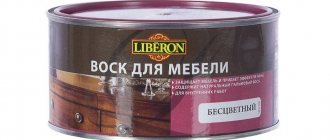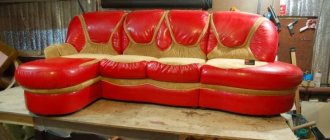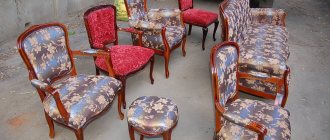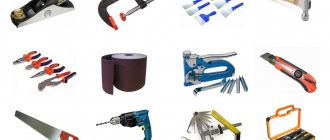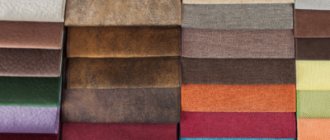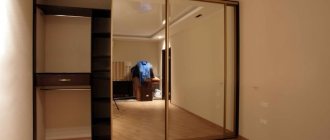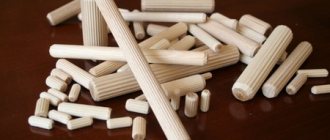Why do you need to restore furniture?
Many of the furniture that are present in the house often become favorite interior items. They are comfortable, familiar and I don’t want to change them at all. In such cases, furniture restoration is often resorted to. This gives it a fresh look and aesthetics. At the same time, the restoration can be done with your own hands, saving a considerable amount of money.
Restoring furniture yourself will cost much less than hiring a professional. An undoubted advantage of such furniture restoration is that you can make pieces of furniture as original as possible in accordance with your taste.
With the help of independent restoration, you can create furniture to your liking. If these are pieces of antique furniture, their value is sometimes very high and restoration becomes a necessity. In this case, it is better to contact restoration specialists.
If the furniture is expensive and rare, it is better to entrust it to professionals.
Furniture restoration
If we compare furniture restoration or the purchase of new interior items, we can clearly speak in favor of the first.
Compared to buying new furniture, restoration is much cheaper. Advantages:
- Saving. With the current variety of materials and a truly extensive pricing policy, you can significantly reduce the cost item in your budget.
- No furniture transportation required.
- Time, it is not necessary to set deadlines for repairs, you can do everything when there is an opportunity for this.
- You can always make changes or add something new to the work already done.
- The use of both purchased materials and those that you already have in stock.
- The opportunity to receive a unique item that will be in a single copy.
- New life given to your favorite pieces of furniture.
The new life that old furniture finds is one of the main advantages in favor of restoration.
Selection of tools
Tools for furniture restoration can be completely different, depending largely on what kind of work you are going to do. For example, if this is restoration of wooden furniture, you will need:
- Sandpaper, you need to take several types of different grain sizes;
- Ruler or tape measure, square;
- To mark the fastening of parts, there are special markers for wood, although you can get by with ordinary pencils;
- Spatulas, plastic and metal;
- A hammer or mallet (if you are afraid of severe damage) so that you can knock out or, conversely, knock out the desired part;
- Wood adhesive;
- Putty for restoring wooden furniture;
- Paint and varnish materials that are suitable specifically for this item;
- Screwdrivers, their size and shape must be determined when inspecting the fasteners on the furniture;
- Brushes, if varnishing is provided;
- Gloves, mask or respirator (it is advisable to protect your lungs from dust or when painting);
- Scissors, chisels, furniture scrapers.
The complete set of tools you need directly depends on what type of restoration you plan to do.
Preparing furniture for the procedure
In order to restore your furniture, you need to carefully prepare it for further work. First, a full inspection is carried out, we identify all violations of integrity, cracks, various chips or abrasions. We remove all the fittings that are possible. In this case, it is necessary to disassemble and (or) remove all elements that block access to hard-to-reach places of wooden furniture, these can be shelves, hinged doors, drawers, etc.
Before restoration begins, the furniture is inspected and all fittings are removed. If there are elements of the product body that are attached with glue and their design is not damaged, it is better to leave them in their original state.
Tools, tools and devices
The basic kit for a repairman must include a screwdriver with a quick-release chuck, a comfortable handle, and a good charge capacity (from 6 hours). Preference is given to models with smooth running, support for a separate drilling mode and the ability to switch programs during operation. To repair furniture at home you will also need:
- hex key for tightening confirmations;
- reverse screwdriver with replaceable bits;
- a set of attachments for furniture (classic drill with a diameter of 4.5 to 10 mm, confirmat 5 mm, Forstner drill);
- tools for marking: chalk, awl, pencil, square, patterns, tape measure;
- pliers, pliers, nail puller or crowbar (use with caution, necessary at the stage of dismantling furniture);
- furniture stapler (for large volumes of work - electric) with staples from 20 mm;
- cutting tools: hacksaw with different blades, stationery knife, scissors;
- abrasives, sponges, carpentry tools for fitting parts: rasp, chisels, end plane;
- hand, carpenter's or corner clamps.
Additionally, devices are prepared for the safe movement of furniture. These could be rollers with a lever system, plastic covers, pieces of carpet. As a last resort, you can resort to an interesting method - using slices of raw potatoes. You will also need film or similar rolled materials that will perform a protective function.
Professional repair and production of furniture is impossible without the use of machine tools and electrical equipment (hair dryer for removing old furniture coatings and gluing edges, router, jigsaw, drill). But for one-time work they are not required. When restoring the metal structure of furniture, a grinder with a welding machine is used.
For removing chips and scratches
To repair and eliminate minor scratches on metal furniture, silicone grease or special masking pencils are used; in particularly difficult cases, the coating is completely changed. Compositions for eliminating chips in wood most often have an epoxy, wax or polymer base. The best results are achieved when covering them with the first composition; especially deep damage is covered with wooden patches from similar species.
Also used for furniture repair:
- Natural drying oil, linseed, teak, Danish or other specialized oils with driers and wax additives for wooden surfaces. They allow you to carefully restore products made from valuable wood or are used in protective compounds. Thus, a mixture of linseed oil and alcohol in a 1:1 ratio is ideal for updating lacquered furniture.
- Furniture touch - applied in one or several layers. It is indispensable for repairing and masking small chips on products made of solid wood, plywood, fiberboard, MDF, veneer, laminate, plastic, and cork.
- Soft, hard or liquid waxes for furniture repair. Such compositions are compatible with all modern wood-based materials; the only disadvantages include difficulties in selecting shades and the inability to cover certain types of stains.
- Folk remedies: strong tea leaves, iodine (effective on dark surfaces), raw walnuts, a mixture of vinegar and olive oil in a ratio of 1:3.
Soft, but not fluffy, fabrics are used to grout the product and remove excess.
The listed compositions are applied to dry, cleaned furniture surfaces using soft brushes and rollers over the entire area (relevant for oils, liquid wax, tea leaves) or pointwise (furniture pencils, iodine, nuts). The main guideline when using them is the manufacturer's instructions, since the requirements for surface preparation may differ.
Stages of superficial and complete restoration of old furniture with your own hands
Flaxseed oil and alcohol
Furniture touch
Waxes for furniture repair
Strong tea brew
Iodine
Raw walnut
Vinegar and olive oil mixture
To update textiles
Textiles worn out over the years most often require complete replacement, as does the soft filling. When choosing new upholstery for furniture, preference is given to modern materials: leather and its high-quality substitute, abrasion- and stain-resistant tapestry, moisture-resistant courtesan and breathable flock. For primary covering, canvas and calico are best suited. To cut these materials and edging braid, scissors with blade lengths of 20 cm or more are used; for temporary fixation, awls, pins, and curved needles are used. Final fastening is carried out using a furniture stapler and a device for tensioning tapes.
It is not necessary to change all the upholstery of upholstered furniture; modern means are used to update (clean and restore) it, selected based on the type of textile:
- Cleaning foams are ideal for removing stubborn stains and stains from moisture-sensitive materials, including suede and nubuck. The best reviews in this group are from Tuba, Twist Fashion and Nordland foams.
- Specialized stain remover sprays for furniture: Unicum, Bagi Chitonit, Vanish and their analogues. The main advantage of these compounds is considered to restore the brightness of the upholstery color.
- Products for repairing, cleaning and restoring leather furniture coverings: “HG 4 in 1”, “Super Leather”, as well as wax aerosols and oils.
- Powders or aerosols converted into granules, used to eliminate unpleasant odors, restore the color of furniture upholstery or clean it from dry dirt.
- Liquid universal shampoos for cleaning carpets and furniture, used only if you are confident that the soft filler will dry out afterwards.
To remove old stains on furniture and enhance the effectiveness of the listed products, it is worth using a steam generator (when cleaning fleecy fabrics - in combination with soft rubber brushes). An exception is made for synthetics, leather or easily melting textiles.
Cleaning foams
Stain remover sprays
Products for restoring leather furniture coverings
Powders
Shampoos for cleaning carpets and furniture
For lubrication of mechanisms
Machine oil is recognized as a universal lubricant, reliably protecting hinges from corrosion. If this is not available, you can use the following to repair furniture:
- spray or oil for lubricating door hinges WD-40;
- grease or lithol;
- effective but short-term folk remedies: vegetable oils, stylus, paraffin.
In addition to lubricant, to perform repairs you will need a syringe, cotton swabs, thin brushes and napkins to remove excess products. If the fasteners become loose or need to be replaced, choppers and linings are prepared in advance from durable but workable wood. The glue for fixing them is selected based on the material of the furniture base.
Furniture made from chipboard or similar composites cannot be repaired using caustic compounds.
Machine oil
Spray or oil for lubricating door hinges
Solid oil or lithol
Vegetable oils
Ideas for remaking furniture with your own hands, necessary tools
Stylus
Paraffin
Restoration of furniture items
Any restoration of wooden furniture must begin with determining the type of wood from which the item was made. You can choose a coating for different types of wood that will look better and last longer. All pieces of furniture to be repaired must be cleaned of dust, stains or grease. Cracked varnish must be removed.
Before you begin restoring wooden furniture, you need to clearly determine what type of wood it is made of.
Surface restoration
To make your furniture look more attractive, sometimes it is enough to just restore the surface. Most often it is this element of the piece of furniture that suffers. These include scratches, marks from cups and other damage.
Scratches on furniture are the most common type of damage. It is necessary to thoroughly clean the required surface in a manner that is preferable to you. Sanding, sandpaper, special solvents.
The desired surface is thoroughly cleaned in a convenient way.
When removing the top layer on the restored surface, it is important to wear protective equipment (gloves, masks).
It is important not to forget about safety precautions. Then, proceed to the actual repair itself. Let's look at this below.
Restoring natural wood surfaces
Many people prefer the natural color of wood to all bright and modern coatings. If you plan to restore wooden furniture, returning it to its original appearance, you need to look at how serious the damage is and, based on this, use the following methods:
- Damage from moisture. In order to remove wood swelling, you can use a combination of salt and olive oil. Having prepared a paste from them, you need to rub it into the area that was damaged and leave for half an hour. At the same time, the salt absorbs all unnecessary moisture, and the oil will return the required shape to the wood fibers.
- If your surface has scratches or cracks that are deep enough, they can be masked using wax putty. They come in a variety of shades, so when mixed (if the color you want is not available) you will get exactly the natural shade that matches your furniture.
- It is also possible to use alcohol with wax for restoration work. In this case, the surface must be completely cleaned with detergent and thoroughly dried. Places that have become light and require color return are generously moistened with alcohol and after the stain disappears, wax is applied to this place, which is then polished with a soft rag. This method is suitable for scratches that are not very deep and cracks.
- The use of special markers created for retouching wooden surfaces.
The restoration method is selected depending on the nature of the damage.
Restoring polish
Polishing on furniture must be restored with special responsibility. She is responsible for the appearance of the product and gives it a well-groomed appearance. By eliminating small areas that were damaged on the film of the old varnish coating, you can return the surface to its former appearance.
Restoring a varnish surface is a responsible task. When choosing the varnish you need for restoration, remember that alcohol varnishes are ideal for this purpose, since films when applying such varnish are formed when the solvent evaporates.
Pay attention to alcohol varnishes. This is what allows the soldering of new and old varnish particles to occur. It is necessary to use a tampon made of wool or other soft fabric; it is moistened in varnish, the excess substance is squeezed out and the varnish layer on the surface is restored using circular movements.
It is better to apply the varnish with a soft cloth.
Removing the varnish layer
There are several methods you can use to remove a layer of old varnish from wood. This is possible using sandpaper or using a special cleaning solution. The wash is much easier to use. The main thing when buying a product is to read the instructions and make sure that it is suitable for your wood or that it is universal. Separately, you need to find out about the consistency of the wash; they come in the form of liquid, paste or gel.
You can wash off old varnish using a special solution. Accordingly, they are suitable for removing varnish from horizontal, vertical or other surfaces. For complete cleaning, you need to apply an even layer of the product to the old layer of varnish, wait for the specified time (if you cover the surface to be treated with polyethylene, the effect of cleaning deep cracks will increase), then using a spatula, carefully remove the unnecessary layer of coating.
At the end, the unnecessary layer is carefully removed with a spatula. Wash the surface and leave until completely dry. After this, the surface is polished, removing all irregularities and preparing for the next stage of work.
After removing the top layer, the surface of the furniture is sanded.
During this work, the use of personal protective equipment is mandatory.
Veneer restoration
The facing material of your furniture, also known as veneer, can also be damaged or damaged. If the damage is minor or the shine has simply been lost due to age, there is the possibility of regular polishing, using products that contain orange oil. This product will restore the shine of your furniture.
If the material is blistered or mechanically damaged, the following methods should be considered. It is necessary to determine the degree of detachment. If it is small, then putty is made on wood that has been previously cleaned and degreased. The surface of the veneer that has become unusable is removed, the edges are sanded, then the free space is filled with putty, leveled and left until completely dry.
Putty is performed only on cleaned and degreased wood. Finally it is sanded with fine sandpaper.
When swollen areas form, glue is used. If possible, the old adhesive material is removed, then a fresh one is carefully introduced and the area is exposed to some kind of press. You can also try to glue the swollen area using a damp cloth and a hot iron; under the influence of hot temperature and moisture, the glue can become wet and connect the loose layers.
Painting furniture surfaces
The most important thing is that when painting, the preparatory work is carried out correctly. After complete cleaning, removal of defects, leveling the desired surface by applying primer or putty, you must wait until the item is completely dry. And only after that, having previously selected the desired paint, proceed. It is advisable, if the interior parts of the furniture are involved in painting, to start with them.
Painting is carried out only after putty or primer. In this way, it will be possible to see how the paint material behaves on the surface and subsequently avoid unsightly smudges on the front side of the furniture.
Decoupage on furniture surfaces
This is one of the popular ways to decorate pieces of furniture during restoration. The very essence of this method is that parts of the furniture are decorated with paper elements with a pattern (soaked in glue), then, after hardening, such “appliqués” are coated on top with a transparent varnish.
Decoupage is a kind of pasting of furniture with a new coating. Using this technique you can create truly unique interior items. The main condition for gluing drawings is a perfectly flat surface, otherwise the application will be uneven or bubble.
For inexperienced people, you need to try this technique on small and unimportant areas of furniture.
Nuances of work depending on the type of breakdown
To strengthen wooden fragments, as well as protect them from damage by fungus and mold, rosin, mastic or other natural resins diluted with organic solvents should be used. At the same time, the material becomes stronger. If holes made by bark beetles are found on the fragments, they are puttied. You need to add rosin to the composition. Not all antique furniture requires extensive restoration. You can restore their beautiful appearance using the following techniques:
- lamination;
- painting or varnishing;
- pasting with film.
Design and style of plywood furniture, production technology
Partial update
If the antique item does not require complete reconstruction, then a new coating can be applied to its surface to update the appearance of the furniture. The item must first be prepared for restoration. The whole process is divided into several stages:
- Preparation. First, the product is disassembled. To wash off the old layer of varnish, the surface is treated with a special remover using a brush. The remaining coating is removed with a scraper. After the product has completely dried, its base is sanded with sandpaper to obtain a smooth surface. Several types of grain size should be used, starting with coarse. Remove dust with a soft damp cloth.
- Applying varnish. The number of layers depends on the type of paintwork material. Acrylic material is pre-diluted with white spirit. The second layer is applied only after the first has completely dried (after 8–10 hours), and there is no need to dilute the product.
- Grinding. To carry out the work, fine-grained sandpaper is required. It is important to achieve a uniform matte surface.
After restoration, the product is wiped with a soft damp cloth, dried and collected. In the future, such furniture can be polished. If there are minor defects on its surface, they are first eliminated.
Preparation
Applying varnish
Grinding
Using Film
At home, pieces of furniture are often restored with film. This is a simple recovery method that saves time and money. The material has different shades and can be glossy or matte. For restoration it is necessary to carry out the following actions:
- Unscrew all fittings.
- Clean the surface with vinegar and detergents, then wipe dry.
- Sand the product with sandpaper (if necessary).
- Cut the film with a margin around the edges (1 cm).
- Before applying it, you need to slightly wet the base. Remove the protective film from the decorative material and lay it on the surface of the furniture. Using a dry cloth, the film should be smoothed from the center to the edges to remove all the air from under it.
If a bubble does appear, it should be carefully pierced with a needle. In order for the material to stick better to the base, the film must be ironed through the fabric. After this, new fittings must be installed on the product.
Unscrew the fittings, wash and clean the surface
Measure out the required amount of film
Cut with extra margin around the edges
Peel off a section of the paper base from one edge and apply the film to the surface.
Press the film, starting from the middle, and smooth it to the sides
Cut the film at the ends
Using a dry cloth, smooth the film from the center to the edges to remove all the air from under it.
Lamination
The lamination technique involves “welding” a decorative coating to the surface of an object. For this purpose, molten synthetic resins are used. Thanks to this treatment, furniture remains resistant to moisture, mechanical damage, and temperature fluctuations for a long time. But the hot method can only be used by a professional master who has the necessary equipment.
Cold lamination is carried out at home. Here there is no heating of the film, and it is fixed on the surface due to the pressure of the press. This restoration technique is quite complex and is therefore not recommended for beginners.
Coloring
For those planning a restoration at home, it is important to consider a master class on painting old surfaces. Before it is carried out, all decorative elements and fittings, mirrors, and glass are removed from the furniture. The surface is cleaned and polished. To make it easier to apply the paint and varnish composition, the item is placed on bars so that it does not stand directly on the floor.
Types of antique furniture, tips for arranging it
Now you can treat the product with an oil primer. It is recommended to bring the paint to a liquid consistency to improve its coverage. Apply the material with brushes of different sizes. The main thing is that they are of high quality and do not “lose” the bristles.
Elimination of defects in wood
Most defects on wooden furniture can be fixed at home. Chips and potholes are filled with liquid materials (putty, a mixture of glue and wood shavings, epoxy resin), which quickly harden. Rot or damage by insects is cleaned and treated with antiseptics. Small cracks can be repaired with colored wax.
Also, minor damage can be eliminated by steaming the wood. Thanks to this, it becomes softer and easier to work with. In such cases, a conventional steam generator or kettle is used. At the end of the procedure, the product is dried with a hairdryer and rubbed with wax.
Removing chips
Antiseptic treatment
Restoration of upholstered furniture
Typically, such restoration involves reupholstering the fabrics on the furniture. In order to restore upholstered furniture, you need to disassemble it, remove the fabric covering and make the necessary pattern on new material. In this case, pay special attention to the layer, the so-called filler. If necessary, replace it with a new one.
When restoring upholstered furniture, special attention is paid to the filler. If you have attached the fabric to all elements of the furniture, before assembly, it is worth replacing parts that have become unusable or are no longer very suitable for good work. The fabric used to make the pattern can be of any color, but for long-term use it is worth choosing a material with increased wear resistance.
Material selection
To begin the first steps of replacing upholstery and other components, it is important to choose the right materials. These include the selection of fabric, the choice of filler: padding polyester and foam rubber, as well as other components. Repairing upholstered furniture is easy to do yourself, because it does not require special skills.
When you start selecting upholstery materials, be guided by the existing interior so that the updated furniture fits harmoniously in style and design into the surrounding environment. Pay attention to the recommendations:
- the material for upholstering furniture should not fade or be too rough, so in addition to aesthetic options, also consider the practicality of the fabric;
- check that the pile on the fabric is firmly fixed, otherwise these areas will wear out faster during use;
- material of increased thickness will help hide some flaws when upholstering a sofa or chair at home, if this is done for the first time.
A private country house is usually equipped with expensive furniture with elite upholstery. A tapestry would be a good option, but it is expensive and is unlikely to be suitable for your first experience in upholstery. It is better to give preference to companion fabrics, which are presented in two variations: plain material, and fabric with a pattern on the same background.
In order for the restoration of furniture to be of high quality, you need to choose a good padding polyester. It is placed instead of foam rubber or used simultaneously with it. In addition, it is suitable for covering sofa cushions. Below are the criteria that determine the relevance of raw materials; in order for furniture to be reupholstered without problems, it is worth taking care of the choice of material:
- the color of the material speaks about its quality. It must be white, and if there are admixtures of other colors, then it is recyclable;
- The padding polyester should be dense and not tear in your hands at the first attempt to stretch it;
- there should be no tears in the canvases;
- the smell of padding polyester is practically absent, but if it is present and has a strong tint, it is better to refuse to choose such a material - furniture should only be reupholstered with high-quality fillers.
Removing scratches and damage
In order to remove small damaged areas on furniture or make them less noticeable, special products are used that can be purchased in stores. Or also many people use folk knowledge. This includes tea leaves, stain, markers and even iodine.
You can try to remove scratches using traditional methods. Using all this to fill and paint white grooves on furniture that are formed due to mechanical damage. By the way, one of the “exotic” products is ordinary mayonnaise, due to its fat content and moisture, wood fibers are saturated and the edges of the damaged area are tightened when swelling.
Rules for caring for furniture
There are some types of wood that require special care; sellers of such furniture usually warn about this. But the general rules for caring for pieces of furniture can be indicated as follows:
- Exclude care products that have an aggressive environment;
- Remove dust with a dry cloth or dust broom;
- If you wash furniture, then you must wipe it dry;
- Do not use care products containing hard fibers.
Every piece of furniture requires mandatory care. Restoring furniture with your own hands becomes a pleasure for many, and for some, a profession. After all, in fact, it’s not that difficult if you figure it out, and you’ll definitely get the effect of such a restoration in the form of rave reviews from your family and friends.
Furniture preparation
Repairing antique items begins with preparing them for work. All actions should be performed carefully and carefully so as not to damage the furniture even more. The antique item must be left for 2-4 days in the room where restoration work will be carried out. The optimal temperature in the room should be between 19–24 degrees. The maximum permissible humidity is 75%.
Advantages and disadvantages of maple furniture, its main shades
If the furniture was previously in a garage or basement, then it will have to be kept at room temperature for at least a month. If reconstruction begins earlier, there is a risk of increasing the scale of damage. Drying furniture using artificial heat sources is prohibited.
Disassembly
In order to treat all surfaces of an object with disinfectant compounds and decorative materials, it must be disassembled. First, remove those fragments that do not have a rigid connection with the frame: drawers, shelves, overhead decorations, doors and handles. If wedges were used to tie furniture together, then the back wall is separated first, then the sides. Sofas and armchairs with tenon joints are completely dismantled. Other strong units are left in their original form.
When separating pieces of furniture, brute force should not be used, and all parts should be placed on a soft surface.
To separate the glue line, you can use alcohol. The upholstery is removed first. There are some features of disassembling furniture depending on the type of connection.
| View | Peculiarities |
| Threads and nails | If the screw turns, you can try to pull it out with pliers. A firmly seated element should be treated with machine oil and try to unscrew it after 30–60 minutes. Bent nails should be aligned and lightly hit with a hammer on the bottom so that the head comes out of the hole. Subsequently, the fasteners are simply pulled out with pliers. It is prohibited to use pliers or a nail puller, as these tools will further damage the wood. If the fastener is driven into the material too tightly, you should try to loosen it. Otherwise, you will have to drill a hole in the furniture and remove the rod. |
| Glue | Alcohol is used to dissolve the glue in the joints. It should be applied along the contour of the seam every 3 cm. To enhance the effect, the treated area should be wrapped in polyethylene. Disassembly is carried out in half an hour. To separate the fragments, it is better to use a knife. |
If you are repairing furniture yourself, then when disassembling it is better to number each part. You can also draw a diagram of how the fragments are connected. This will help not to confuse anything.
Before treating furniture with disinfectants, it must be disassembled
Furniture fragments should be separated carefully, without the use of brute physical force.
First of all, it is necessary to dismantle the upholstery
Cleaning the structure
To remove dust or cobwebs, use a soft cloth or vacuum cleaner. “Delicate” fabrics can be dry cleaned if they have not deteriorated over time. To clean the interior surfaces, use dishwashing liquid and a soft cloth. There may be old stains on the surface of an antique table or chest of drawers. You can get rid of them with the same detergent, using it to treat the stained area and leave for 15 minutes. To avoid damaging the furniture, do not use hard sponges or metal brushes. Abrasive powders are contraindicated.
It is best to remove dust or cobwebs with a soft cloth or vacuum cleaner.
You can get rid of old stains with a detergent by treating the stained area with it and leaving it for 15 minutes.
